Just a status update on the expansion...
Manaforge
I've had a couple of minor successes recently during my playtest sessions with Manaforge. Here's where I stand:
Iteration 6.6: Trying something different with the customer cards. The way customers were implemented, customers want players to construct item cards of specific elements. However, with the random distribution of item cards on the center board, plus the randomness of the dice, there just isn't enough player agency over what kinds of cards the players build to make that sort of goal reliably attainable; the mechanic ended up being frustrating instead of fun. So, instead, I changed the customer cards directly consume mana to activate. When activated, the customers immediately give VP. Once a customer is activated three times, they leave. (Kind of a throwback to the original 'tracks' idea.) Sure some players are biased towards certain mana types, but all players can potentially generate all four mana types. If I do the customers this way, tho, then the customers aren't really suitable to be endgame scoring anymore. I'm okay with paying that price. Also, just to see what happens, I gave out one 'private' customer to each player at the beginning of the game.
I also flipped the polarity of the dark effects. Instead of losing health, you gain 'dark' tokens. (Think of it like gaining corruption.) Each dark costs you half of a point at the end of the game, though that will definitely change; probably should be a sliding scale.
Result 6.6: Huh, not entirely bad. The customers give the players another place to spend mana, which is one of the design goals for the expansion. And each player getting their own personal customer is a nice touch. The customers weren't getting used up fast enough though, so by the end of the game there were a bunch of customer cards out in play. Not good; I need to change the way new customers show up.
The dark tokens worked out well enough. One player had a huge stack of them at the end of the game, another had barely any; a good indicator that the game possesses different possible strategies. The black die was very popular, almost always being seen as useful. The dark market cards didn't go over quite as well. Apparently only a few of the cards were attractive, the rest were largely ignored. I got a few requests for better and more varied effects in there as well. The point difference between few and many dark tokens isn't significant enough, but that can be tweaked.
Iteration 6.7: Since these ideas are starting to come together, I paused for a moment to jot stuff down and try to organize it all. I ended up classifying my ideas into one of four categories: 1) customer cards, 2) the black die, 3) dark item cards, and 4) the effect of 'dark' tokens.
1) The customers work but don't flow right. Using player feedback, I changed customers to leave after they are used twice, to encourage turnover. Then instead of dealing out a couple of customers at the start and then one more per turn, I just set the number of customers to two; when one leaves, another is dealt out immediately.
2) The black die works well. No changes needed.
3) I have dark item cards that can potentially give three mana each turn; testing shows that those are too strong. However, I'd kind of like to keep the idea, so I'm going to give it another chance. I changed the card so that you get dark not only when you build it but also when upgrade it. Dunno if that's right. At first glance, it should probably give dark when you tap it, but that makes its best power strictly inferior to the effect of the black die. Also, I had a card that removed dark from the player; that changed to remove curses (explained below) instead. No other changes yet, though I know some are coming.
4) The effect of gaining dark on the player needed to be more interesting. So I removed the tokens and added a small (6 space) circular track. Each space on the track has a VP penalty, increasing from 0 to -3, applied to your score at the end of the game. Each time you gain a dark, you move forward on the track. If you make a lap around, your penalty resets back to zero, but you must take a 'curse' card. (Another deck to shuffle. Yuck.) Each curse card is worth -4 VP if you have it at the end of the game, but each curse also has a unique 'dispel' cost that lets you discard it if you pay a large amount of a specific combination of mana. So in essence the darkness has come back to collect on the power it loaned to you. :)
Result 6.7: Moderately successful. The pacing of the customer cards worked well. Only two uses per customer means that you really need to jump to get the one you want. The table had several "d'oh!" moments when one player stole a customer that someone else wanted. The high turnover meant that customers did not stay stagnant for long. I had several requests for more variation in the cards; maybe I need to give out more rewards than just points.
The black die worked well, as always. The dark item cards are still unappealing except for a select few, so that still needs work. The curse cards... I'm not sure about. It seems like they went over well. One player got a curse and was able to discard it. Another got one right at the end of the game and had to keep it. No surprises either way, tho. And the game winner came down to a tiebreaker, so it looks like the point balance isn't too far off. Will take a couple more plays to see if it's working as intended.
Other Stuff
One interesting thing to note is that a lot of the various podcasts I listen to have been talking about roll & write games lately. I'm starting to get the itch to pull my Nebula prototype back out and see if I can make it work.
Nothing else to report right now. Hopefully I'll have more successes to talk about soon!
Manaforge
I've had a couple of minor successes recently during my playtest sessions with Manaforge. Here's where I stand:
Iteration 6.6: Trying something different with the customer cards. The way customers were implemented, customers want players to construct item cards of specific elements. However, with the random distribution of item cards on the center board, plus the randomness of the dice, there just isn't enough player agency over what kinds of cards the players build to make that sort of goal reliably attainable; the mechanic ended up being frustrating instead of fun. So, instead, I changed the customer cards directly consume mana to activate. When activated, the customers immediately give VP. Once a customer is activated three times, they leave. (Kind of a throwback to the original 'tracks' idea.) Sure some players are biased towards certain mana types, but all players can potentially generate all four mana types. If I do the customers this way, tho, then the customers aren't really suitable to be endgame scoring anymore. I'm okay with paying that price. Also, just to see what happens, I gave out one 'private' customer to each player at the beginning of the game.
I also flipped the polarity of the dark effects. Instead of losing health, you gain 'dark' tokens. (Think of it like gaining corruption.) Each dark costs you half of a point at the end of the game, though that will definitely change; probably should be a sliding scale.
Result 6.6: Huh, not entirely bad. The customers give the players another place to spend mana, which is one of the design goals for the expansion. And each player getting their own personal customer is a nice touch. The customers weren't getting used up fast enough though, so by the end of the game there were a bunch of customer cards out in play. Not good; I need to change the way new customers show up.
The dark tokens worked out well enough. One player had a huge stack of them at the end of the game, another had barely any; a good indicator that the game possesses different possible strategies. The black die was very popular, almost always being seen as useful. The dark market cards didn't go over quite as well. Apparently only a few of the cards were attractive, the rest were largely ignored. I got a few requests for better and more varied effects in there as well. The point difference between few and many dark tokens isn't significant enough, but that can be tweaked.
Iteration 6.7: Since these ideas are starting to come together, I paused for a moment to jot stuff down and try to organize it all. I ended up classifying my ideas into one of four categories: 1) customer cards, 2) the black die, 3) dark item cards, and 4) the effect of 'dark' tokens.
1) The customers work but don't flow right. Using player feedback, I changed customers to leave after they are used twice, to encourage turnover. Then instead of dealing out a couple of customers at the start and then one more per turn, I just set the number of customers to two; when one leaves, another is dealt out immediately.
2) The black die works well. No changes needed.
3) I have dark item cards that can potentially give three mana each turn; testing shows that those are too strong. However, I'd kind of like to keep the idea, so I'm going to give it another chance. I changed the card so that you get dark not only when you build it but also when upgrade it. Dunno if that's right. At first glance, it should probably give dark when you tap it, but that makes its best power strictly inferior to the effect of the black die. Also, I had a card that removed dark from the player; that changed to remove curses (explained below) instead. No other changes yet, though I know some are coming.
4) The effect of gaining dark on the player needed to be more interesting. So I removed the tokens and added a small (6 space) circular track. Each space on the track has a VP penalty, increasing from 0 to -3, applied to your score at the end of the game. Each time you gain a dark, you move forward on the track. If you make a lap around, your penalty resets back to zero, but you must take a 'curse' card. (Another deck to shuffle. Yuck.) Each curse card is worth -4 VP if you have it at the end of the game, but each curse also has a unique 'dispel' cost that lets you discard it if you pay a large amount of a specific combination of mana. So in essence the darkness has come back to collect on the power it loaned to you. :)
Result 6.7: Moderately successful. The pacing of the customer cards worked well. Only two uses per customer means that you really need to jump to get the one you want. The table had several "d'oh!" moments when one player stole a customer that someone else wanted. The high turnover meant that customers did not stay stagnant for long. I had several requests for more variation in the cards; maybe I need to give out more rewards than just points.
The black die worked well, as always. The dark item cards are still unappealing except for a select few, so that still needs work. The curse cards... I'm not sure about. It seems like they went over well. One player got a curse and was able to discard it. Another got one right at the end of the game and had to keep it. No surprises either way, tho. And the game winner came down to a tiebreaker, so it looks like the point balance isn't too far off. Will take a couple more plays to see if it's working as intended.
Other Stuff
One interesting thing to note is that a lot of the various podcasts I listen to have been talking about roll & write games lately. I'm starting to get the itch to pull my Nebula prototype back out and see if I can make it work.
Nothing else to report right now. Hopefully I'll have more successes to talk about soon!
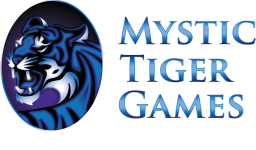
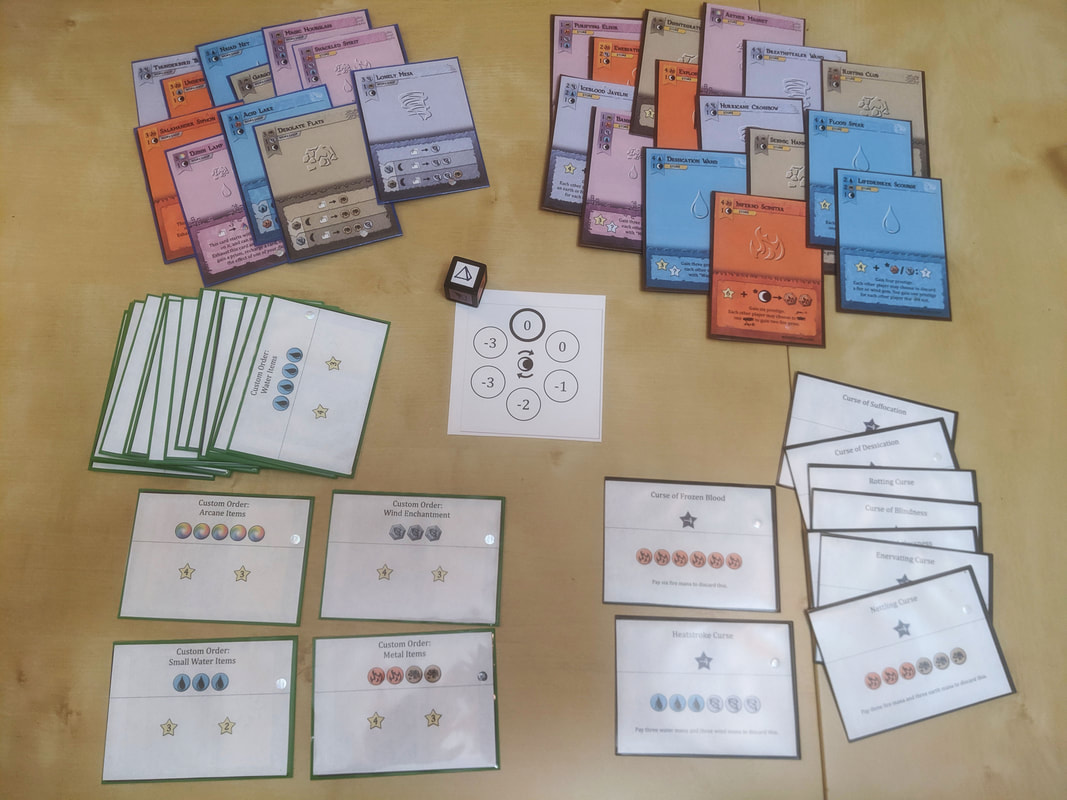


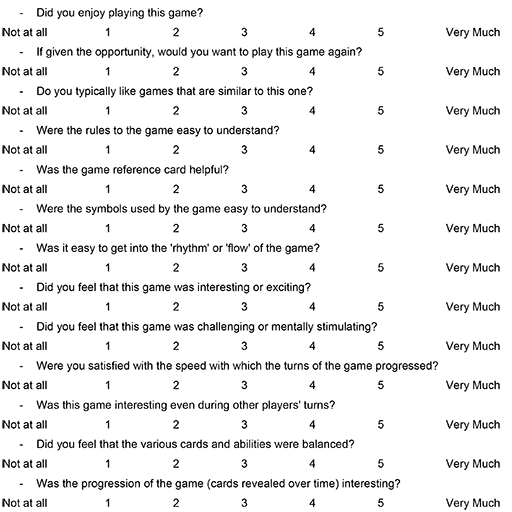
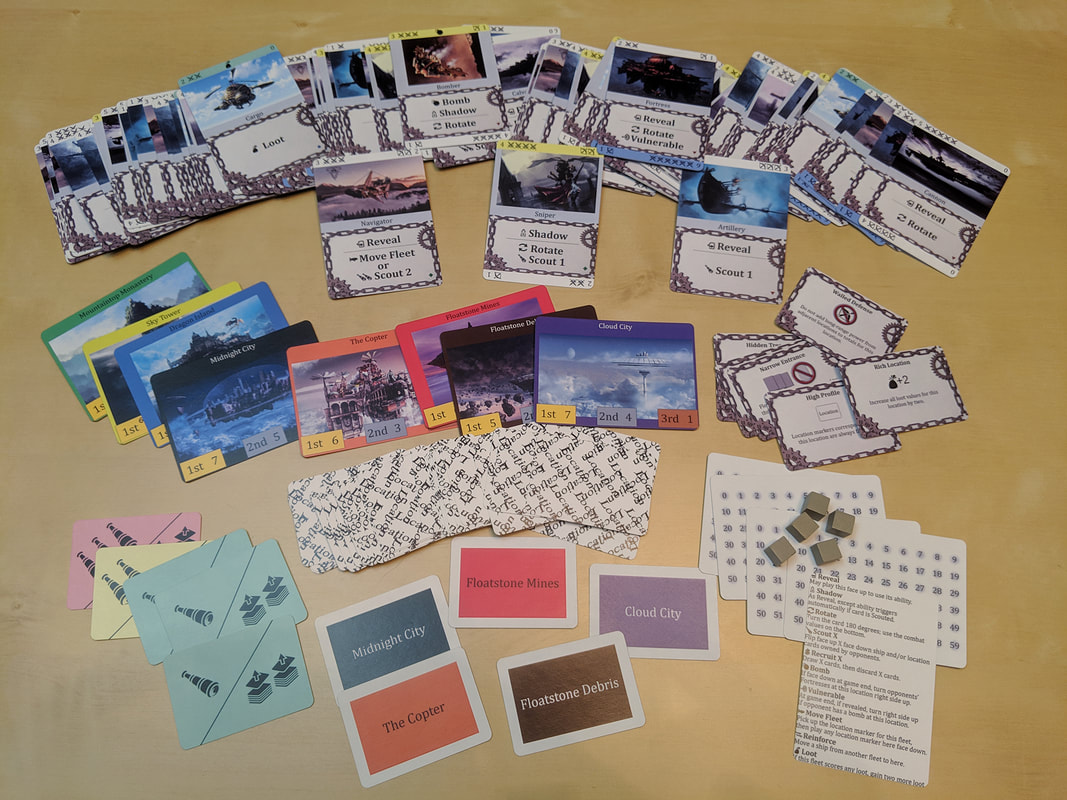




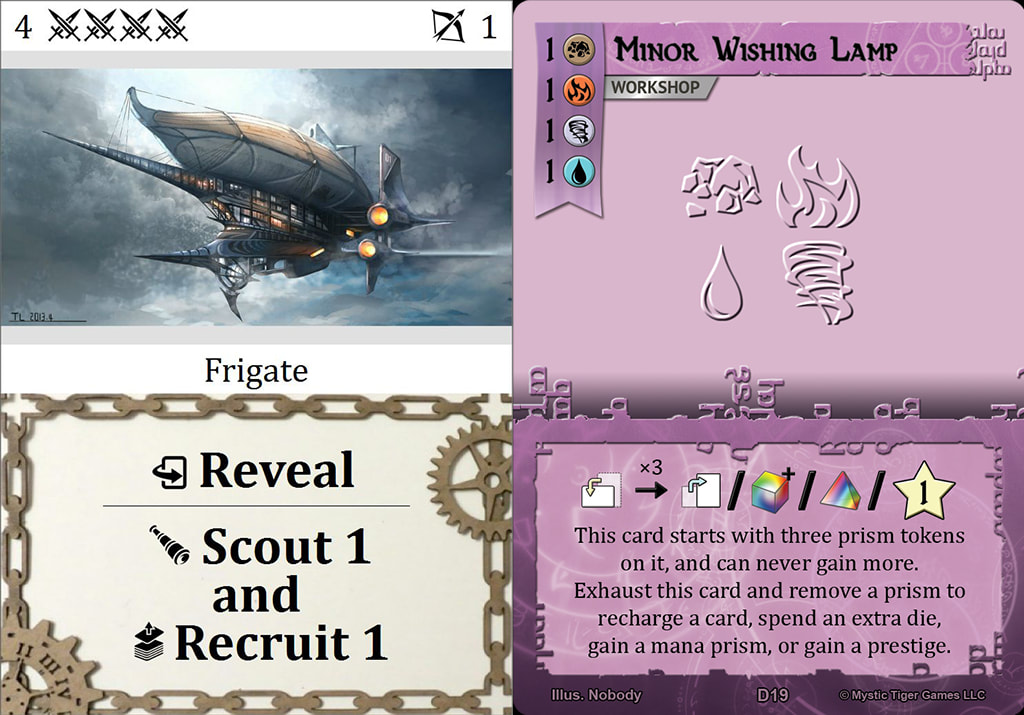
 RSS Feed
RSS Feed